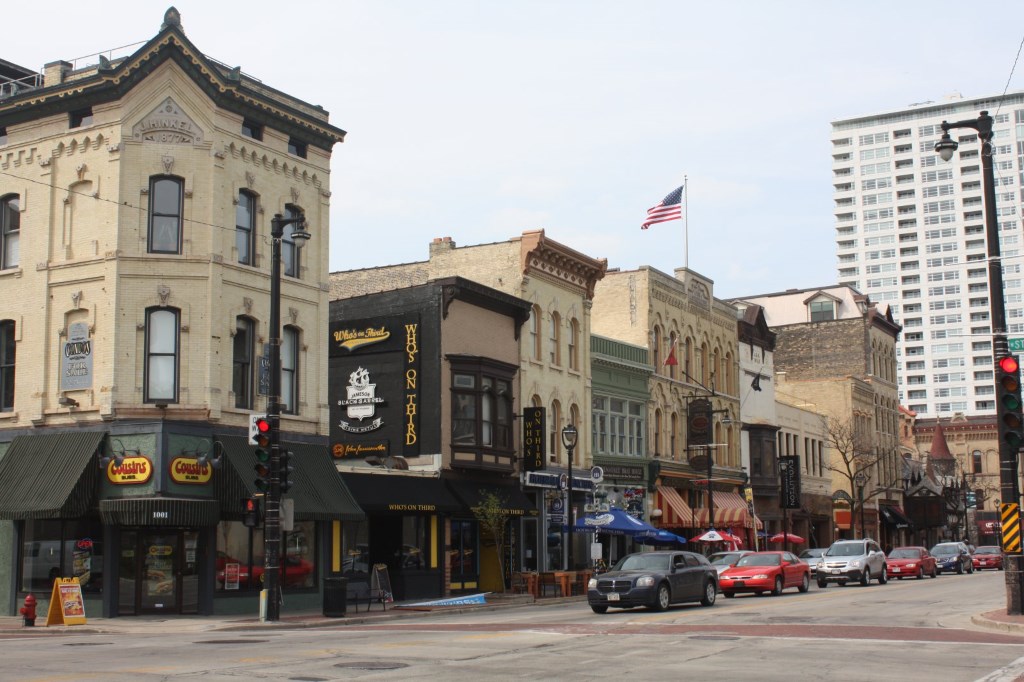Jobs Up, Joblessness Down Last Month
State sees modest improvement in October numbers with a continuing shortage of workers.
Wisconsin’s jobless rate fell and employment rose in October, the state labor department reported Thursday, but a continuing gap between employers’ need for workers and the number of people available to work for them is likely to persist in the years to come.
It’s a demographic cliff that labor market experts have been warning about for years before the pandemic, but one that appears to have worsened as COVID-19 has prompted people to leave the workforce perhaps sooner than they otherwise might have.
Wisconsin added 2,000 private sector jobs in October when statistics are adjusted for seasonal changes in the labor market. Government jobs, however, decreased by 3,000.
Using seasonally adjusted data, DWD counted 100,600 Wisconsin residents in October who were unemployed — meaning that they were actively seeking work but hadn’t been hired. That’s 4,700 fewer than in September, the agency reported.
Scott Hodek, section chief for DWD’s office of economic advisors, said the single biggest increase in Wisconsin jobs in October was in leisure and hospitality. The sector added 7,800 jobs. While it has still not caught up to its pre-pandemic level in October 2019, Hodek said, it’s now about 11% short of that.
Laura Dresser, associate director of the policy and research center COWS at the University of Wisconsin-Madison, noted that the job growth in leisure and hospitality includes 4,800 new jobs in the sub-sector of food and accommodation. That includes restaurants and related employers, who have been especially vocal about their inability to hire enough workers.
“So the sector that has been most impacted by the epidemic and is a central concern in the current debates around not being able to find workers is actually finding more workers than anywhere else,” Dresser told the Wisconsin Examiner via email.
October is also the second month in a row in which the state’s employment data was collected after federal supplemental unemployment benefits ended nationwide. The added benefits were included in three successive federal pandemic relief bills.
Encouraged by some business lobbyists, Republican legislators passed a bill requiring Gov. Tony Evers to cut off the federal supplement early in Wisconsin. They blamed the additional $300 a month that people collecting unemployment insurance received until early September for difficulties that employers were having filling jobs as they were trying to resume full-scale operations in the second year of the COVID-19 pandemic.
In some other states, governors did cut off the federal supplement. Evers vetoed the Wisconsin legislation, however.
Hodek said Thursday that a DWD analysis looked at employment levels in states that ended the supplement early, “and we didn’t see the expected surge” that would indicate some job seekers had postponed looking for work because of the supplement.
After the supplement ended nationwide, the agency reviewed employment data for all the states, including Wisconsin, in September and again in October, “and haven’t seen a surge that we would be able to attribute to this [the end of supplemental jobless pay],” Hodak said.
Hiring has fallen by about 2,100 jobs in retail and wholesale trade using seasonally adjusted data. (Data not seasonally adjusted show about 1,000 jobs added in that sector, reflecting temporary holiday season hiring.) The overall decline in retail and wholesale trade reflects the migration of consumer transactions to online shopping, Hodak said.
A seasonally adjusted gain of 1,200 jobs in warehousing and transportation over September, and 6,000 over October a year ago, also reflects that trend. “That’s because as we do more online shopping, we have to have more and more distribution centers that can get those products to people,” he said.
Newly available federal data for the state on hires as well as work departures, or “quits,” show both are up in Wisconsin as well as nationwide. That’s not surprising, he said, but rather “something we’d expect to see after a disruptive event” such as the pandemic. “But again, these are also on trend, given the workforce challenges that we’ve seen in the state, nation and really all the developed world.”
Labor force participation remains high in Wisconsin, with 66.4% of people in the state reporting they have jobs or are actively seeking work.
For the U.S., the rate is 61.6%. That’s been a long-standing pattern for the state. “We do have a highly engaged labor force here in Wisconsin,” Hodak said. And in the short term, the labor force is projected to grow.
But the state’s demographic trends — chiefly, the aging population — show that participation will level off in the coming decades and likely begin to decline after 2040, he added.
“This is something we’ve never really seen before,” Hodak said, and it is why DWD is focusing on “our underutilized talent pools and helping businesses with strategies to connect with available workers.”
Unemployment data are drawn from monthly surveys of households conducted by the federal government. State statistics are calculated using formulas that incorporate the statistics for other states in the region.
Hodek said BLS found a “data distortion” in the information from one of the neighboring states in Wisconsin’s group of states, which due to the calculation process “affected data from all the states in our region, including Wisconsin.”
Having uncovered the error, BLS ran the numbers for September again, which resulted in the new, lower Wisconsin unemployment rate for the month. The corrected formula was used to calculate the October unemployment rate and will be used in the months ahead.
October unemployment drops, jobs increase, although numbers are modest was originally published by the Wisconsin Examiner.






















